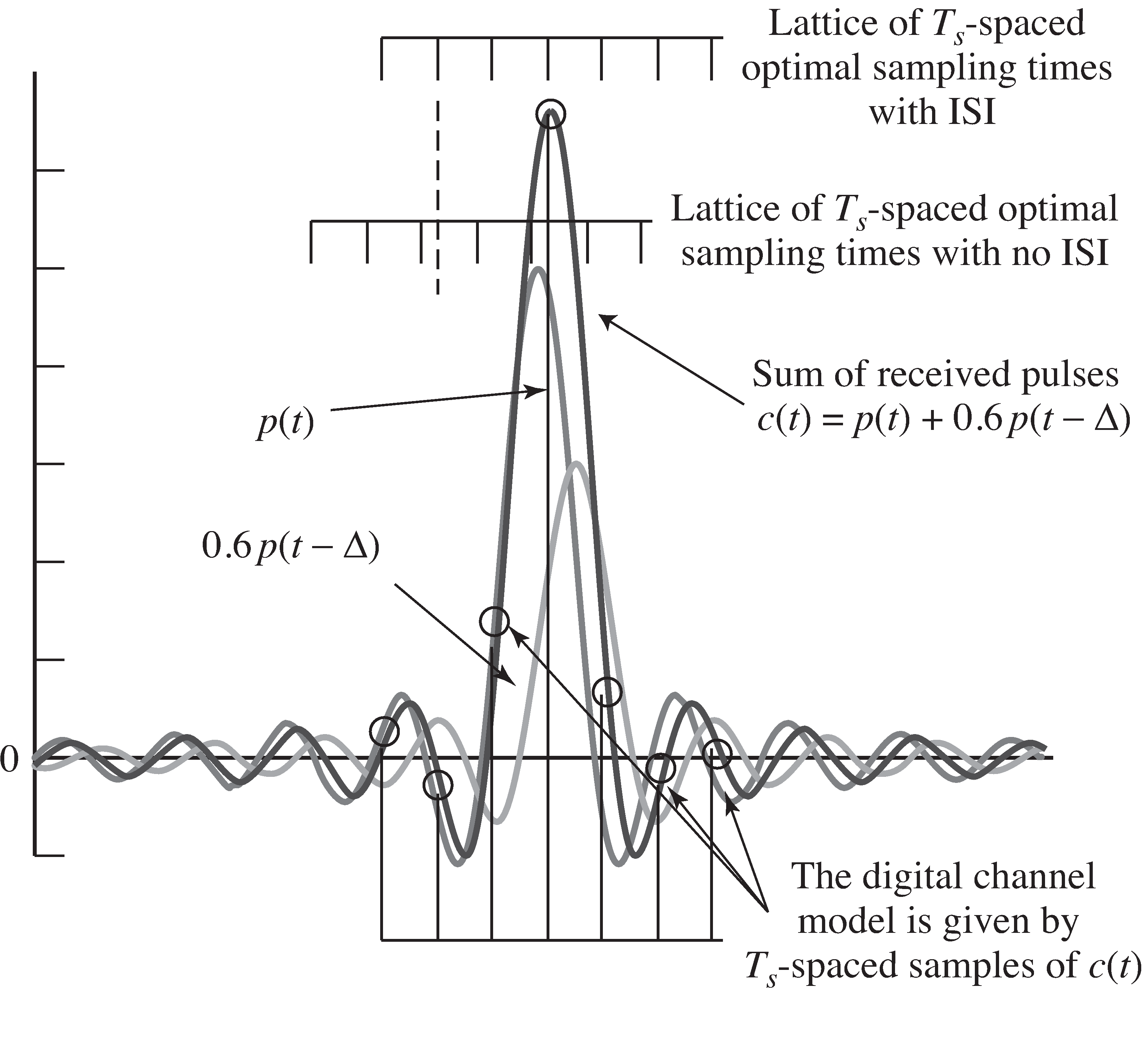| << Chapter < Page | Chapter >> Page > |
The design objective of the equalizer is to undo the effects of the channel and to remove theinterference. Conceptually, the equalizer attempts to build a system that isa “delayed inverse” of [link] , removing the intersymbol interference while simultaneouslyrejecting additive interferers uncorrelated with the source. If the interference is unstructured (for instance white noise) then there is little that alinear equalizer can do to remove it. But when the interference is highly structured (such as narrowband interference from anotheruser), then the linear filter can often notch out the offending frequencies.
As shown in Example [link] of [link] , the solution for the optimal sampling times found bythe clock recovery algorithms depend on the ISI in the channel. Consequently, the digital model (such as [link] ) formed by sampling an analog transmission path (such as [link] ) depends on when the samples are taken within each period . To see how this can happen in a simple case, consider a two-path transmissionchannel
where is some fraction of . For each transmitted symbol, the received signal will containtwo copies of the pulse shape , the first undelayed and the second delayed by and attenuated by a factor of . Thus, the receiver sees
This is shown in [link] for . The clock recovery algorithms cannot separate the individualcopies of the pulse shapes. Rather, they react to the complete received shape, which is their sum. The power maximizationwill locate the sampling times at the peak of this curve, and the lattice of sampling times will be different fromwhat would be expected without ISI. The effective (digital) channel model is thus a sampled versionof . This is depicted in [link] by the small circles that occur at spaced intervals.

In general, an accurate digital model for a channel depends on many things: the underlying analog channel,the pulse shaping used, and the timing of the sampling process.At first glance, this seems like it might make designing an equalizer for such achannel almost impossible. But there is good news. No matter what timing instants are chosen, no matterwhat pulse shape is used, and no matter what the underlying analog channel may be(as long as it is linear), there is a FIR linearrepresentation of the form [link] that closely models its behavior. The details may change, but it is always a sampling of the smooth curve (like in [link] ) that defines the digital model of the channel.As long as the digital model of this channel does not have deep nulls(i.e., a frequency response that practically zeroes out some important band of frequencies), there is a good chance that theequalizer can undo the effects of the channel.
When there is a training sequence available (for instance, in the known frame information that is used insynchronization), this can also be used to help build or “train” an equalizer.The basic strategy is to find a suitable function of the unknown equalizer parameters that can be used to definean optimization problem. Then, applying the techniques of Chapters [link] , [link] , and [link] , the optimization problem can be solved in a variety of ways.

Notification Switch
Would you like to follow the 'Software receiver design' conversation and receive update notifications?